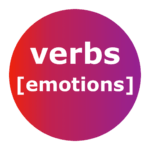
英語を身につけるには、聞こえる音と文字の関係を知ることが大切です。機械的に英単語を日本語の文字に置き換えるのではなく、音の単位を知ること。
We all have a native language. 誰もがみな母語を持っている。
That’s right. Some have more than two. そうだね。ふたつ以上母語がある人もいるよ。
Let’s talk about the difference between English and Japanese. 英語と日本語の違いを。
I would say that these two languages are extremely different. 英語と日本語は対極的だね。
Right. Japanese has 5 vowels and 50 letters. そう。日本語には5つの母音と50のひらがながある。
Each letter combines a vowel and a consonant. ひらがなは、母音と子音の組み合わせ。
English has 15 vowel sounds represented by 5 letters. 英語は15の母音を5文字で示す。
That’s a fundamental difference. えらい違い。
Now think about when you say, “that’s right.” That’s rightと言う時のことを考えてみよう。
The entire phrase has two syllables, right? フレーズ全体で2音節だよね?
In Japanese, the perception of syllables is different. 日本語は、音の単位の認識が違うよ。
“That’s right” is made up of 6 Katakana letters. ザッツライト。6つのカタカナに聞こえる。
Right. A syllable is a unit of pronunciation. そう。音節とは、発音の単位のこと。
It also segments the sound inputs. それは、聞こえる音の入力を区切る単位でもある。
In English, one-syllable words are the most commonly used. 英語では、1音節の語が大半。
Is that why English sounds fast? だから、英語は速く聞こえるのかな?
Most English words have short sounds. 英語の単語の大半は、短い音でできている。
It’s helpful for English learners to know. 英語の学習者は、知っておくといいね。
You need to get used to it. 慣れることだよ。
We should practice vocalizing various expressions. 色々、声に出すプラクティスが大切。




